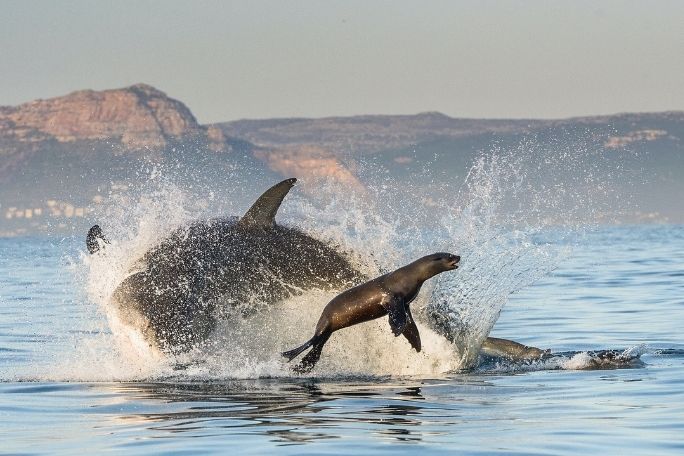Lesson summary
Students use examples from the ocean to draw food chains showing the relationships between organisms. They then apply their learning to finding food chains around them. They use their food chains to suggest the outcomes when one of the animals is removed from the chain.
Learning intentions:
Students will...
- show predator and prey relationships by drawing food chains
- use their food chains to show the consequences of removing any element out of the chain.
Lesson guides and printables
Lesson details
Curriculum Mapping
Australian curriculum content descriptions:
Year 3 Science:
- Living things can be grouped on the basis of observable features and can be distinguished from non-living things (ACSSU044)
- Represent and communicate ideas and findings in a variety of ways such as diagrams, physical representations and simple reports (ACSIS060)
Year 4 Science:
- Living things, including plants and animals, depend on each other and the environment to survive (ACSSU073)
- Represent and communicate ideas and findings in a variety of ways such as diagrams, physical representations and simple reports (ACSIS071)
Syllabus Outcomes: ST2-4WS, ST2-10LW.
Resources required
- Internet access
- Student worksheets.
Additional info
This is an original Cool.org lesson. Facts and figures in these lessons may have changed since this lesson was published. We always endeavour to update our resources in a timely manner, but if you see an error or issue in our resources please get in touch with us.


Welcome back!
Don't have an account yet?
Log in with:
By signing up to Cool.org you consent and agree to Cool's privacy policy to
store, manage and process your personal information. To read more, please see
our privacy policy here(Opens in new tab).
Create your free Cool.org account.
Many of our resources are free, with an option to upgrade to Cool+ for premium content.
Already have an account?
Sign up with:
By signing up to Cool.org you consent and agree to Cool's privacy policy to
store, manage and process your personal information. To read more, please see
our privacy policy here(Opens in new tab).